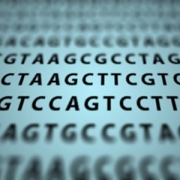Genomics and the new Covid-19 variant
What do we know about the newly-identified variant of coronavirus sweeping across the UK? And how did genomics help us get there?
In a speech in the House of Commons on 14 December last year, health secretary Matt Hancock announced the identification of a new variant of SARS-CoV-2, thanks to genomic sequencing, which was causing concern among the government’s medical and scientific advisors.
The new variant, known as VUI-202012/01 (variant under investigation, December 2020, number 1), is still being investigated, but it appears to be significantly more transmissible than many others which have been identified – but not more harmful.
The advantage of genomic sequencing
The COVID-19 Genomics UK Consortium (COG-UK), which discovered the new strain, was established in March 2020 in response to the pandemic. Its reason for being? To ensure that accurate genomic sequencing of the virus, at pace, remains at the heart of the UK’s response.
The consortium sequences randomly-selected samples from around 10% of positive tests collected across the UK and uses the resulting data in two ways.
First, the data is used to understand which variants of the virus are in circulation and the frequency with which they’re found among infected people. This has allowed for the creation of phylogenetic trees, which were instrumental both in showing that the UK’s early cases mostly came via Europe rather than from China directly, and in identifying the supposed increased transmissibility of the new variant. They can also be can be useful in showing the most likely routes of transmission between people.
The second application of the genomic data gathered by the consortium is in identifying mutations within the virus that laboratory experiments suggest could be clinically or epidemiologically significant.
You can hear more about the benefits of sequencing in Covid-19 in our film with Professor Andrew Beggs.
The UK and the international picture
It’s worth noting that the countries that have reported new variants of SARS-CoV-2 have been ones where genomic sequencing forms a significant part of the pandemic response.
The UK is at the very forefront of global sequencing efforts, with COG-UK having sequenced over 150,000 Sars-CoV-2 samples – as many as the rest of the world put together. Many experts believe that the new variant detected in the UK is unlikely to be the only one.
Professor Sharon Peacock from Public Health England, who is leading COG-UK, told the BBC: “If you’re going to find something anywhere, you’re going to find it probably here first.”
Professor Tom Connor from Cardiff University – who is also contributing to COG-UK – agreed, telling the BBC that he believes it is “probable” that similar variants are emerging around the world, but are going undetected.
In addition, because many other countries lack comparable data, it is difficult to ascertain whether the new variant identified in the UK emerged in England or arrived from elsewhere.
Changes to the spike protein
The new variant has caused concern because it has 23 separate mutations, 17 of which lie in regions coding for viral proteins. The mutations of most interest to experts are those that affect the so-called ‘spike’ protein; especially one, in particular, which affects the receptor binding motif that interacts with the ACE2 receptor on host cells.
At this early stage, these mutations are believed to be likely candidates for the increased transmission rate that is causing such a problem in the UK, and research is being undertaken to confirm whether this is the case.
The spike protein is the target for leading vaccines, which has caused some public concern. However, vaccination should enable the body to make antibodies targeting multiple sites on the spike protein, so one change is unlikely to render vaccination ineffective.
–









